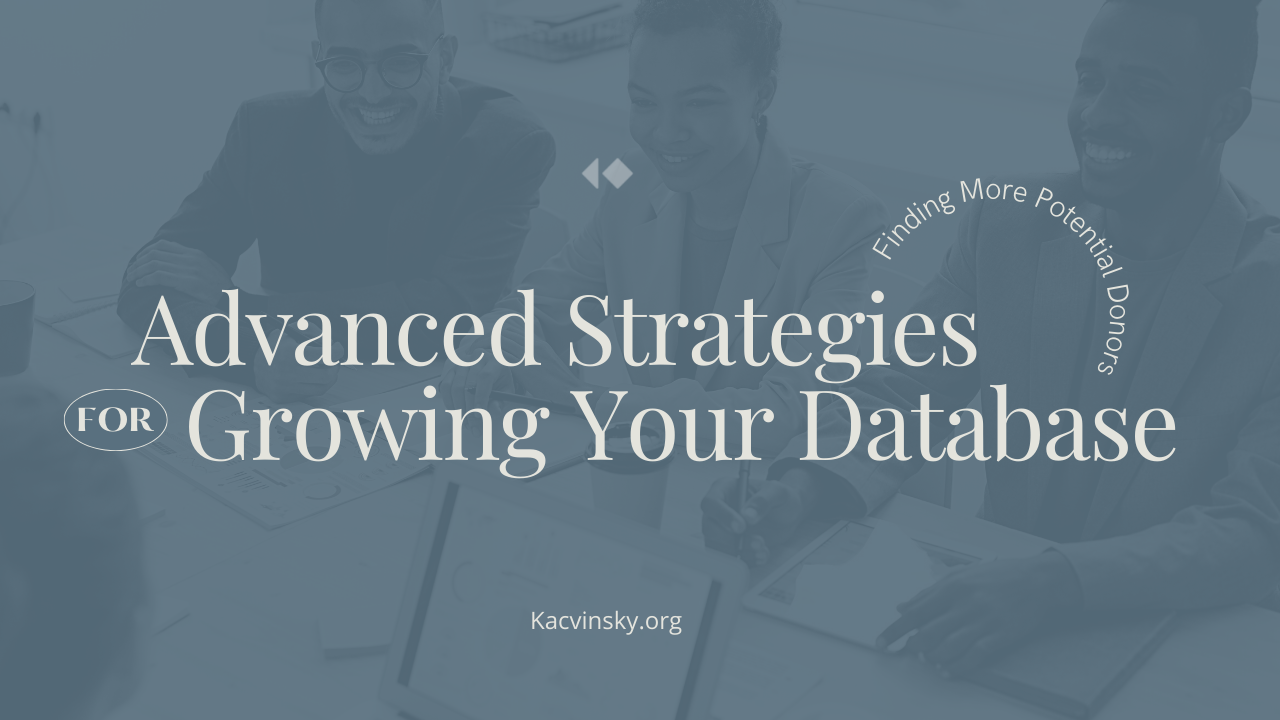Advanced Strategies for Adding Prospective Donor Names to Your Database
Apr 25, 2022
We talked about “Namestorming” as a strategy for adding prospective donors to your database. This article expands on the “networking” advice given previously. Truly networking is the most effective way to build a database. What does it look like?
1. The Proximity Principle
One reason wealthy people have wealthy friends is that they meet their friends doing the things they do. Yes, wealthy people have similar pastimes. If you want to find and build relationships with wealthy donors, do the types of things that wealthy donors do. They are at other charity events; they are golfing at the country clubs or at the clubhouse for dinner, volunteering on boards of other nonprofits, etc.
The closer you are to your ideal donor, the more likely you will be in a relationship with them. This is one reason why older, wealthier fundraisers find it easier to fundraise than others.
So, yes, I am telling you to buy tickets to all the other galas around (gasp!). I am telling you to become a donor at several other well-aligned organizations (double-gasp!!), and I am telling you to volunteer to help other organizations (triple-gasp!!!). If you are sweating, please read #2 before having a panic attack.
2. Get Over The Scarcity Mindset
If you want to grow your network, you need to get over the scarcity. Donors who give to your organization will give to other organizations, and they will give more than they give to you. Generous people are generous. Period. Generous with you and generous with others.
3. Form True Partnerships with Other Organisations
Now that you are not threatened by like-minded organizations, partner with them! There are two organizations that I work with that have a very well-aligned mission, and I am working on forming a joint project with them. It’s easier for me as a third party to develop these partnerships because it feels less threatening to both sides. If there is an organization you want to partner with, maybe a board member can help get it started.
What does a partnership look like? That’s where the still and creativity meet. “Partnership” means both organizations benefit, so be prepared to give something (hopefully equal) in return for your benefit. Also, if you want to build a new partnership, be prepared to be the first one to give.
Some examples?
If a bill in congress were introduced that would harm the constituents you serve, maybe you can create a landing page petition to gather signatures to overturn the bill. You send it to your audience, and the other organizations send it to theirs. You both have access to the names, addresses, and email addresses of the signers. Win-win for both of you. Perhaps you host a co-branded/joint event at your facility. You look good to your audience, and they look good to theirs, while still growing your brand recognition to those who care about your cause. Much depends on your organization’s mission, what the other organization does, and what assets you each have. But, joining together can be a great way to each have instant success.
4. Black Book
Get a little notebook (a black one if you want to be fancy) or start a new note on your phone. As you go about your day-to-day life, write down the names of people you hear about and some context. Within three months, you should be able to start connecting the dots between these people. Over the course of 2 years, you will have hundreds of connections—more on this next week.
5. Ask for an Introduction
There will be people you know about that you do not have contact info for. Ask around for an introduction. When you know who it is you need to get in touch with, it’s much easier to get ahold of them. You may ask around and find out that they only take introductions through a secretary. Email the secretary and request an appointment - be sure to name drop and let the secretary know how you got in touch and all the people you mutually know.

